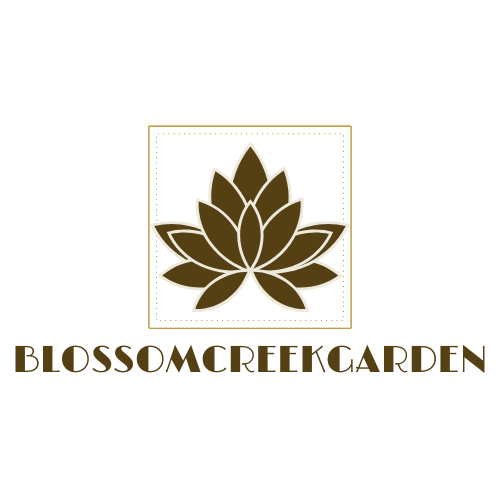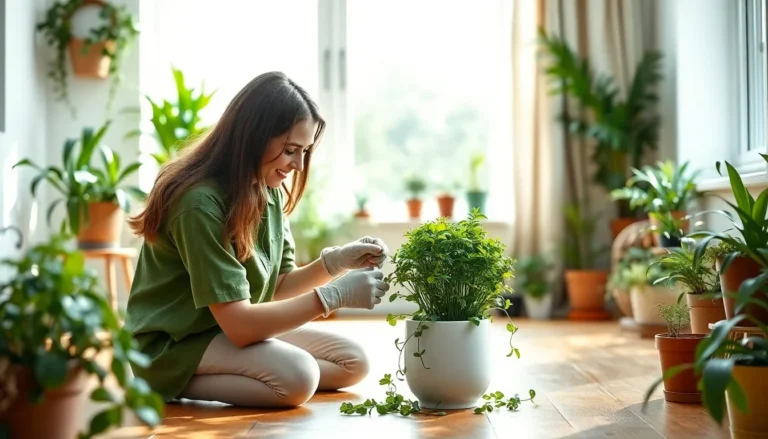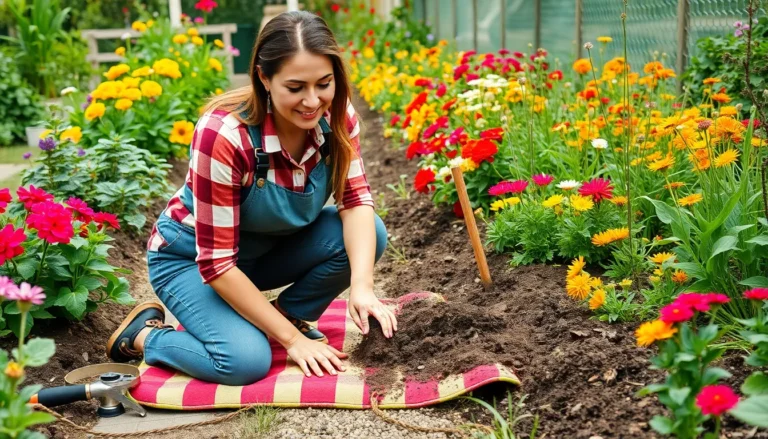Gardening containers are like the superheroes of the plant world. They save the day when space is tight and make it possible for anyone to cultivate a lush garden, even in a tiny apartment. Imagine transforming your balcony into a vibrant oasis where herbs, flowers, and veggies thrive without taking over your living room.
Gardening Containers
Gardening containers come in various styles, each serving unique purposes and environments. Understanding these types helps gardeners select the best option for their needs.
Pots
Pots represent the most common gardening containers. These versatile vessels accommodate a variety of plants, including herbs and flowers. Available in numerous materials like clay, plastic, and ceramic, pots cater to different gardening aesthetics. Drainage holes often make these containers optimal for keeping plants healthy. Sizes range from small to large, allowing for diverse planting options.
Planters
Planters are typically larger than pots and hold more soil, making them suitable for bigger plants and arrangements. Often found in rectangular or square shapes, they fit well on patios, balconies, or narrow spaces. Many planters include built-in drainage systems, which promotes healthy root growth. Materials like wood, fiberglass, and metal enhance the durability and style of planters. Gardeners enjoy using them to create visually appealing displays.
Raised Beds
Raised beds elevate gardening to an efficient level, offering customized soil conditions. They provide excellent drainage and extend the growing season by warming soil faster. Constructed from materials such as wood, stone, or metal, raised beds can vary in size and shape, accommodating different garden designs. These containers enable easier access while gardening, reducing strain on the back and knees. Many gardeners appreciate the organized layout provided by raised beds.
Materials Used For Gardening Containers

Various materials contribute to the effectiveness and appeal of gardening containers. Each material offers distinct advantages for both novice and experienced gardeners.
Plastic
Plastic containers are lightweight and available in numerous colors and styles. They retain moisture well, helping to reduce the frequency of watering. Different types of plastic, like recycled materials, provide eco-friendly options. Many plastic containers feature drainage holes, promoting healthy root growth. Their affordability makes them popular among budget-conscious gardeners. UV-resistant features ensure durability against sun exposure, allowing for long-term use.
Clay
Clay pots, known for their classic look, enhance aesthetics in any garden space. They possess excellent breathability, preventing root rot by allowing air circulation. Clay’s natural capability to regulate moisture helps maintain an optimal environment for plants. Various styles and sizes are available, giving gardeners flexibility in design. While heavier than plastic, their sturdiness adds stability, especially for larger plants. Proper care, such as sealing the interior, can help prevent cracking and prolong their lifespan.
Metal
Metal containers, often crafted from galvanized steel or aluminum, introduce a modern touch to garden design. Their durability ensures longevity, even in harsh weather conditions. Metal pots typically feature excellent drainage options, crucial for healthy plant roots. They can heat up quickly, which is beneficial for heat-loving plants. Many gardeners appreciate the rustic charm that metal containers add to patios or balconies. Choosing rust-resistant types can extend their lifespan, making them a practical choice for outdoor use.
Choosing The Right Container Size
Selecting the appropriate container size is crucial for successful gardening. A container’s size impacts plant growth, moisture retention, and overall health.
Small Containers
Small containers, such as pots with diameters of 4 to 10 inches, suit herbs and small flowers. These compact spaces allow for easy management and mobility. Placing them on balconies or windowsills ensures sufficient sunlight. For plants like basil or marigolds, adequate drainage remains essential. Choosing a pot with drainage holes promotes healthy root systems. The compactness of small containers encourages regular watering, facilitating nutrient uptake.
Large Containers
Large containers, usually 12 inches or more in diameter, accommodate bigger plants and multiple smaller ones. These versatile spaces provide ample soil volume, promoting strong root development. For vegetables like tomatoes or larger ornamentals, depth matters as well. Selecting containers that hold at least 5 gallons enhances soil moisture retention. Using raised planters or big pots allows for easier access during maintenance. The weight and size of large containers provide stability, reducing toppling in windy conditions.
Tips For Successful Container Gardening
Successful container gardening involves careful planning and execution. Selecting the right soil and mastering effective watering techniques is essential for plant health.
Soil Selection
Choosing the appropriate soil is vital for container gardening. A high-quality potting mix contains organic matter, ensuring good drainage and moisture retention. Look for a blend that includes ingredients like peat moss and perlite for optimal results. Different plants may require specific soil types, such as cacti needing a mix designed for desert conditions. Frequent replacement of the soil enhances nutrients, supporting growth. Additionally, consider the size of the container; larger containers may require more soil volume, providing a stable environment for root systems.
Watering Techniques
Effective watering techniques ensure plants thrive in containers. Watering deeply encourages roots to grow down into the soil rather than remaining near the surface. Container plants generally require more frequent watering, particularly in warmer weather, due to faster evaporation. Checking soil moisture with a finger about an inch deep can determine if watering is necessary. Using self-watering containers can simplify this process, maintaining consistent moisture levels. Avoiding waterlogging is crucial, as excessive water can lead to root rot and other issues. Adjusting watering frequency based on plant needs guarantees a healthy container garden.
Conclusion
Gardening containers offer a practical and enjoyable way to cultivate a vibrant garden in limited spaces. They empower individuals to explore their gardening passion without the constraints of traditional gardening. By selecting the right type and size of container and using quality materials, anyone can create a thriving green space.
With thoughtful attention to soil and watering techniques, container gardening becomes a rewarding experience that brings beauty and fresh produce right to one’s doorstep. Embracing this method opens up endless possibilities for creativity and growth, allowing gardeners to transform any small area into a lush oasis.




